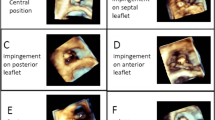Abstract
Detection of residual fibrotic tissue, called ghosts, after lead extraction is a new phenomenon in cardiology. This paper aims at describing the phenomenon of ghosts and determining their characteristic features. The study group consisted of 580 consecutive patients who underwent transvenous lead extraction (TLE) due to local infection, endocarditis and a superfluous lead. Each patient was clinically examined with the application of transthoracic echocardiography and transesophageal echocardiography directly before and after TLE. In the study population ghosts were detected in 110 patients (19%), and in 470 cases (81%) fibrotic tissue residuals were not found. Ghosts were most often located along the originally implanted lead’s route. Longer ghosts were found after the removal of cardiac resynchronization therapy (CRT) and dual chamber pacing (DDD) devices. The local infection and infective endocarditis are associated with a larger number of ghosts revealed after the removal procedure (p = 0.006). The type of the implanted device: CRT/ICD/double chamber pacemaker/single chamber pacemaker, similar to the number of leads, did not impact on the number of the detected ghosts. The relationship between abrasions of the leads and the presence of ghosts proved significant, however (p = 0.043). TLE is associated with the presence of fibrotic tissue residuals in approx. 19% of patients. Indications for lead extraction due to local infection and endocarditis yielded significantly more cases of ghosts than in the entire patient population. The presence of abrasions is a good predictor for the presence of ghosts on the leads.




Similar content being viewed by others

References
Bongiorni MG, Soltadi E, Zucchelli G, Di Cori A, Segreti L, De Lucia R et al (2008) Transvenous removal of pacing and implantable cardiac defibrillating leads using single sheath mechanical dilatation and multiple venous approaches: high success rate and safety in more than 2000 leads. Eur Heart J 29:2886–2893
Deharo JC, Biongiorni MG, Rozkovec A, Bracke F, Defaye P, Fernandez-Lozano I et al (2012) European Heart Rhythm Association. Pathways for training and accreditation for transvenous lead extraction: a European Heart Rhythm Association position paper. Europace 14:124–134
Farroqi FM, Talsania S, Hamid S, Rinaldi CA (2010) Extraction of cardiac rhythm devices: indications, techniques and outcomes for the removal of pacemaker and defibrillator leads. Int J Clin Pract 8:1140–1147
Wikoff BL, Love CJ, Byrd CL, Bongiorni MG, Carrillo RG, Crossley GH et al (2009) Transvenous lead extraction: Heart Rhythm Society expert consensus on facilities, training, indications, and patients management. Heart Rhythm 6:1085–1104
Erbel R, Rohmann S, Drexler M, Mohr-Kahaly S, Gerharz CD, Iversen S et al (1998) Improved diagnostic value of echocardiography in patients with infective endocarditis by transoesophageal approach. A prospective study. Eur Heart J 9(1):43–53
Sakai M, Ohkawa S, Ueda K, Kin H, Watanabe A, Matsushita S et al (1987) Tricuspid regurgitation induced by transvenous right ventricular pacing: echocardiographic and pathological observations. J Cardiol 17(2):311–320
Rizzello V, Dello Russo A, Casella M, Biddau R (2008) Residual fibrous tissue floating in the right atrium after percutanous pacemaker lead extraction: an unusual complication early detected by intracardiac echocardiography. Int J Cardiol 127(2):e67–e68
Tomaszewski A, Kutarski A, Tomaszewski M (2011) Łącznotkankowe pozostałości po usuniętych elektrodach. Kardiologia Polska 69:619–620
Brunner MP, Cronin EM, Duarte VE, Yu C, Tarakji KG, Martin DO et al (2014) Clinical predictors of adverse patients outcomes in an experience of over five thousand chronic endovascular pacemaker and defibrillator lead extractions. Heart Rhythm 11(5):799–805
Byrd CL, Wilkoff BL, Love CJ, Sellers TD, Reiser C (2002) Clinical study of the laser sheath for lead extraction: the total experience in the United States. Pacing Clin Electrophysiol 25:804–808
Hauser RG, Katsiyiannis WT, Gornick CC, Almquist AK, Kallinen LM (2010) Deaths and cardiovascular injuries due to device-assisted implantable cardioverter-defibrillator and pacemaker lead extraction. Europace 12(3):395–401
Dvorak P, Novak M, Kamaryt P, Slana B, Lipoldova J, Dvorak P (2012) Histological findings around electrodes in pacemaker and implantable cardioverter-defibrillator patients: comparison of steroid-eluting and non-steroid-eluting electrodes. Europace 14(1):117–123
Narducci ML, Di Monaco A, Pelargonio G, Leoncini E, Boccia S, Mollo R et al (2017) Presence of “ghosts” and mortality after transvenous lead extraction. Europace 19(3):432–440
Kutarski A, Polewczyk A, Boczar K, Ząbek A, Polewczyk M (2014) Safety and effectiveness of transvenous lead extraction in elderly patient. Cardiol J 21:47–52
Glover BM, Watkins S, Mariani JA et al (2010) Prevalence of tricuspid regurgitation and pericardial effusions following pacemaker and defibrillator lead extraction. Int J Cardiol 3(145):593–594
Kutarski A, Pietura R, Czajkowski M (2012) Difficult dual stage transcutaneous lead extraction complicated by fracture of both leads. Cardiol J 19:412–417
Agarwal SA, Kamireddy S, Nemec J, Voigt A, Saba S (2009) Predictors of complications of endovascular chronic lead extractions from pacemakers and defibrillators: a single-operator experience. J Cardiovasc Elctrophysiol 20:171–175
Tomaszewski A, Poterała M, Kutarski A, Brzozowski W, Tomaszewski M (2014) Fibrotic tissue residuals in the heart after transvenous CRT-D leads extraction. Kardiologia Polska 72(supl. 3):172–173
Laurent GJ (1987) Dynamic state of collagen: pathways of collagen degradation in vivo and their possible role in regulation of collagen mass. Am J Physiol 252(1):C1–C9
Acknowledgements
The authors of this manuscript declare that they have complied with the Principles of Ethical Publishing present in the Declaration of Helsinki and the study protocol was approved by a local ethics committee (IRB Approval Number 0254/355/2018). The authors have declared that no conflict of interest exists.
Author information
Authors and Affiliations
Corresponding author
Ethics declarations
Conflict of interest
The authors have reported that they have no relationships relevant to the contents of this paper to disclose.
Additional information
Publisher's Note
Springer Nature remains neutral with regard to jurisdictional claims in published maps and institutional affiliations.
Rights and permissions
About this article
Cite this article
Poterała, M., Kutarski, A., Brzozowski, W. et al. Echocardiographic assessment of residuals after transvenous intracardiac lead extraction. Int J Cardiovasc Imaging 36, 423–430 (2020). https://doi.org/10.1007/s10554-019-01731-5
Received:
Accepted:
Published:
Issue Date:
DOI: https://doi.org/10.1007/s10554-019-01731-5



